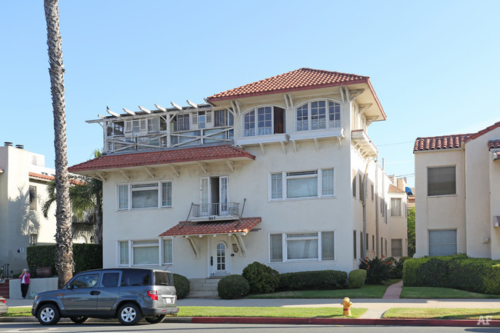News
Landmarks Commission Report
by Amy Green, Commissioner
Each Landmarks Commission meeting begins with a historic exploration of a physical or built detail unique to Santa Monica. The history of accessing the Santa Monica Beach was the topic of the July meeting. Commissioner Margaret Bach addressed the natural and man-made access points that have led residents and visitors to Santa Monica’s sandy shores since the late 19th century. Bach’s presentation encouraged more questions than answers as she appealed to Santa Monica residents and patrons to share any information they might have about the history of the stairs, inclines and overpasses leading to the beach.

927 Ocean Avenue.
The Commission reviewed demolition permits, considered the potential designations of Landmark Structures, and approved Certificates of Appropriateness for two historic properties. All of 909-911 Montana Avenue has been landmarked; this includes two multi-residential buildings and one commercial structure as well as the land on which they are sited. This property is both unique in its blending of Streamline Moderne and Spanish Revival architecture and a representative example of a 1940s mixed-use property that reflects both multi-family residential and commercial development on the Wilshire and north of Montana areas of Santa Monica.
The second newly designated property, 927 Ocean Avenue, was built in 1922 and is a rare example of a 1920s Mediterranean Revival apartment hotel built for the early tourism industry. After thorough research and evaluation, Planning Department staff concluded that the apartment hotel exemplified, symbolized, or manifested “elements of the cultural, social, economic, political or architectural history of the City.” Originally constructed as an apartment hotel, it illustrates major patterns in the development of Santa Monica’s business and architectural history and is now an apartment house.
This entry was posted in Advocacy and tagged Landmarks Commission.
Bookmark the permalink.